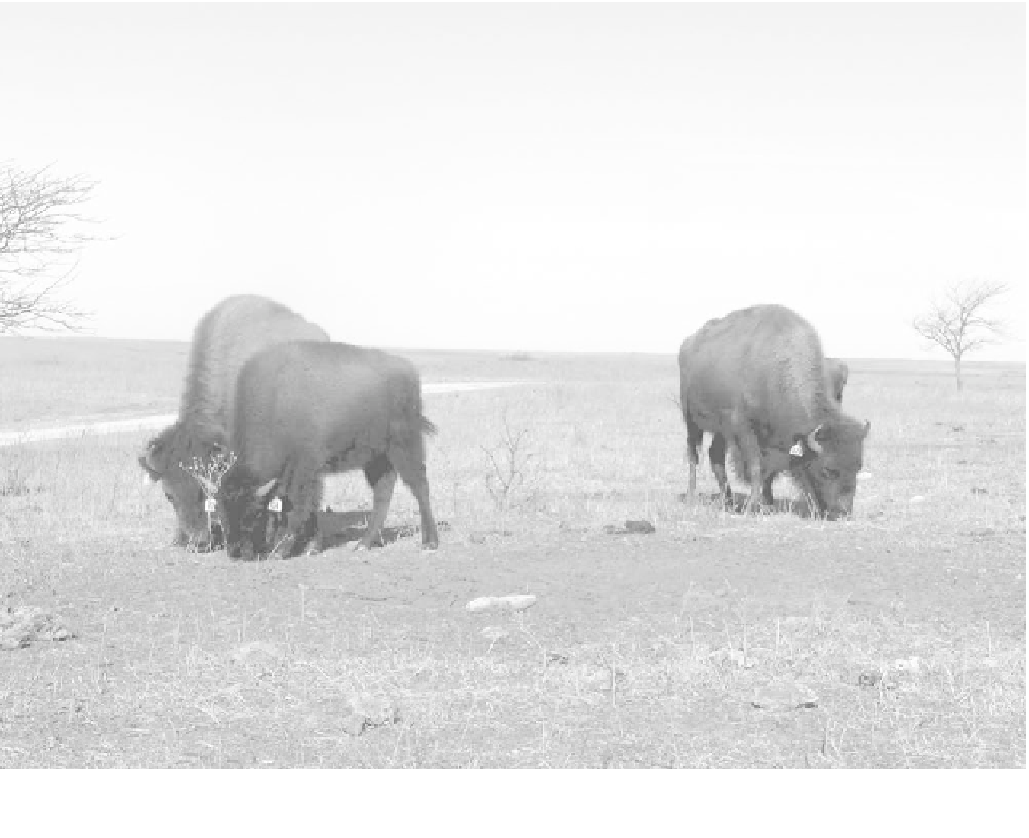Agriculture Reference
In-Depth Information
FIGURE 19.3
Bison and bison manure.
The consumption of plant biomass by animals contributes to the recycling of nutrients in
most natural ecosystems in the world. Photo courtesy of Catherine Burns.
animals can play a role in managing species interactions
(Chapter 15), increasing agroecosystem diversity and
stability (Chapter 16), taking advantage of successional
processes (Chapter 17), and maximizing the efficiency of
energy capture and use (Chapter 18).
plants — that is, the development of agriculture — pro-
ceeded parallel with, and was often directly connected with,
the domestication of animals and the development of
grazing and pasture systems.
The vastly different environments and ecosystems
around the world offered very different opportunities for,
and placed different constraints upon, the development of
more-settled socioeconomic modes based on domestica-
tion of wild species. Some environments were too cold
and arid to support any kind of agriculture, but offered
native ungulates suitable for domestication. Other envi-
ronments were conducive to both agriculture and raising
of livestock. Of the prehistoric human cultures inclined to
develop toward agricultural societies, some created animal-
based systems and others, crop-based systems. In some
cases the two were directly coupled.
However, while there are many examples of systems
relying almost exclusively on domesticated animals, there
are very few crop-based systems that lack domesticated
animals entirely. In this sense, animals are truly a hallmark
of agriculture.
COEVOLUTION OF LIVESTOCK
ANIMALS AND AGRICULTURE
In the earliest human cultures, people made a living off
the land as hunters and gatherers, exploiting both the
animals and the plants available in the ecosystems around
them. Therefore, it is not surprising that as some human
societies developed economies that could support larger
populations and ensure more reliable food supplies, they
domesticated animals at about the same time as they
domesticated plants.
Domestication was a coevolutionary process in two
senses. First, as discussed in Chapter 14, domesticated spe-
cies changed in concert with human cultures, each becom-
ing dependent on the other. Second, the domestication of

Search WWH ::

Custom Search